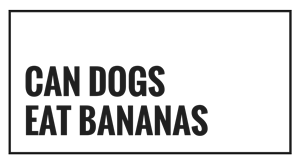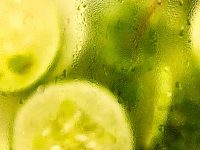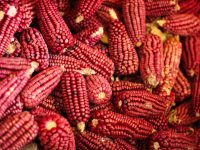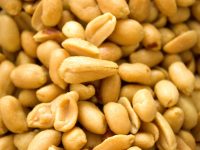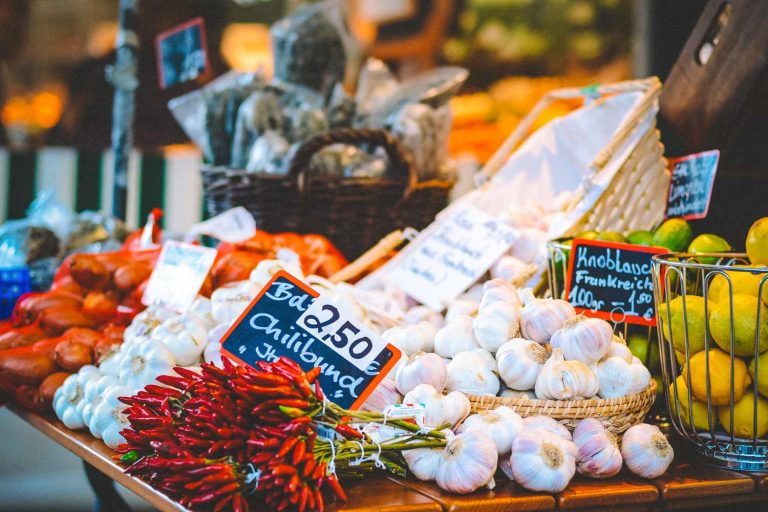As a good Italian, I understand the benefit of adding garlic to recipes. The herb makes for a great addition to many sauces and meat dishes. Garlic is also praised for improving heart and blood system conditions. However, it does not earn the same rep when it comes to canines. Is garlic bad for dogs? Today we will answer this important question.
Can Dogs Eat Garlic?
You may have heard that garlic is off limits to canines. Are these rumors true? Unfortunately they are. Dogs cannot eat garlic at all. Furthermore, dogs cannot consume any members of the allium family. This means that in addition to garlic, onions, chives, leeks, and shallots are also off limits for canines.
Pet Poison Helpline cites garlic as being five times more toxic than onions for dogs. This is a concern that should not be taken lightly, since onions are also very toxic to dogs.
Why is Garlic Bad for Dogs?
Now that we know garlic is off limit to dogs, let’s explore why. How exactly is garlic bad for dogs?
Garlic and other allium family plants contain thiosulfate. This element is toxic to canines but not humans. Thiosulfate causes hemolytic anemia in dogs by damaging red blood cells. This leads to red blood cells being destroyed.
How do you know if your dog is anemic? Signs of anemia in dogs include rapid breathing, lethargy, weakness, jaundice, pale mucous membranes, and dark colored urine.
Furthermore, garlic can also cause stomach upset in dogs. This includes diarrhea, vomiting, appetite loss, stomach pain, dehydration, and even depression. Other signs of onion toxicity include drooling, nausea, oral irritation, exercise intolerance, and collapse.
Therefore, it is extremely important that dogs are never fed garlic or food items that contain it.
Understanding Garlic Toxicity
Unfortunately for dogs, garlic is present in many dishes. Not only is fresh garlic toxic, but concentrated garlic powder is also dangerous to dogs. Therefore more foods than you think might contain garlic as an ingredient.
The AKC estimates that about 15 to 30 grams of garlic per kilogram of body weight will produce dangerous changes in your dog’s blood. Since a garlic clove weighs about 3 to 7 grams, this means it would take a lot of garlic to seriously affect your dog.
On the other hand, some dogs are more sensitive to garlic toxicity than others. For example, Japanese dog breeds, such as the Akita and Shiba Inu, tend to be more sensitive to garlic poisoning. Garlic also happens to be extremely toxic for cats to consume.
What to Do if Your Dog Eats Garlic
Though all dogs react differently, your dog eating a small amount of garlic should not be a cause to panic.
However, if you notice any signs of garlic toxicity, call your vet immediately. Garlic poisoning is rarely fatal in dogs, but can lead to serious health complications and even blood transfusions.
It is also important to be aware that garlic toxicity signs may not be immediately apparent. Pet Poison Helpline states that there might be a delayed onset for onion and garlic poisoning in dogs. Signs of the poisoning might not appear for several days.
Danger Foods for Dogs
Garlic and onions are clearly off limits to dog. What other foods are bad for dogs to eat? The ASPCA breaks down what people foods to keep away from your furry friend.
Alcohol, chocolate, coffee, and caffeine are unsurprisingly bad for dogs. However, some other food items might be less obvious. The ASPCA cautions against feeding dogs avocado, citrus, dairy, coconut, and coconut oil. However, these foods are not considered toxic to dogs. While certain foods are always off limits to dogs, other foods can be served safely.
Foods that dogs should never eat include grapes, raisins, macadamia nuts, raw meat and eggs, bones, and xylitol.
Final Verdict
Is garlic bad for dogs? It certainly is. Garlic is toxic to dogs, along with all members of the allium family. Garlic poisoning could result in anemia and gastroenteritis in dogs. Never feed your dog any foods containing garlic or onion.
